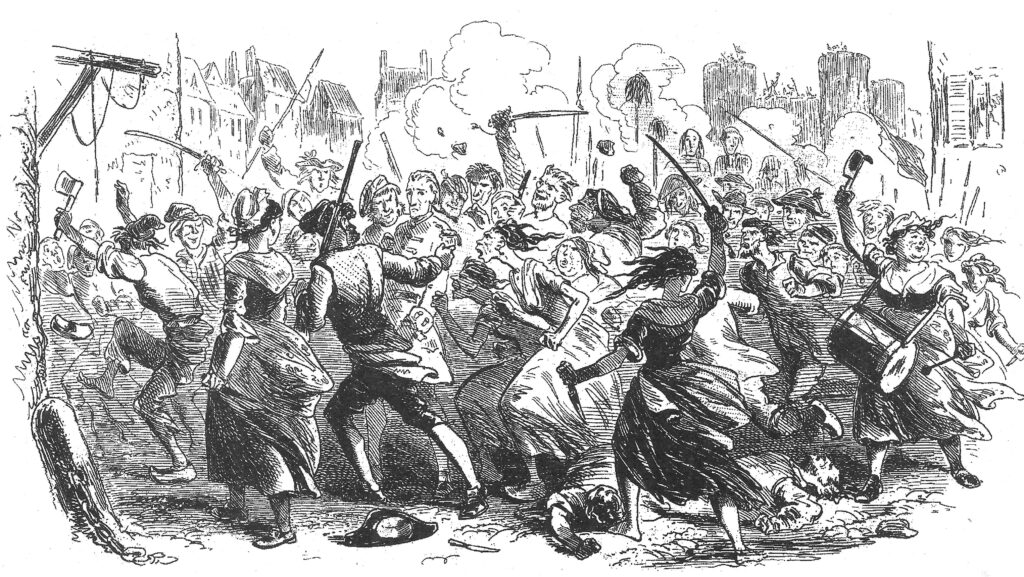It was the best of times, it was the worst of times … and it was a strategic development plan that made all the difference.
“It was the best of times, it was the worst of times, it was the age of wisdom, it was the age of foolishness,” it was … fundraising in the wake of COVID-19.
Alright, it may not have been “the best of times” for anyone—but there was wisdom and there was success for many nonprofits. For others, there was much foolishness as they struggled and waded through the uncertainty.
What distinguished the successful from the unsuccessful organizations? Strategic planning. You’ve heard us say it before, and you’ll hear us say it again. The main thing separating successful nonprofits from unsuccessful ones is strategy and planning.
Our proprietary research and professional experience (not to mention common sense) have shown us this, but the pandemic threw this point into stark relief. In March when businesses, offices, and even travel started to shut down in waves across the country, countless nonprofits were caught flat footed. Already behaving reactively in their fundraising activities, they didn’t know what to do in the face of crisis.
Many other nonprofits were just as surprised by everyone else by the crisis, but their proactive fundraising—rooted in good strategy and planning—positioned them to respond creatively and intelligently to the crisis.
Let’s look at how the crisis affected two real (but anonymized) organizations.
THE AGE OF WISDOM
There was once an organization that planned. Let’s call them the “Institute for Clear Thinking.” The “Institute” promotes clear thinking through lectures and events and publications. In the last several years, the Institute has more than tripled its annual revenue. Part of this is due to the felt importance of its mission, but, just as crucially, the organization has employed an ambitious and actionable fundraising plan for the past several years. The key word here: employed.
The Institute didn’t merely write a plan or “have a plan in mind.” They employed their plan. They wrote it out, they stuck to it, they updated it as necessary.
So what happened to the Institute in March? They followed our advice and stayed the course. That doesn’t mean they did everything they had planned. That was impossible. It means that they pulled out their plan, they updated it, and they responded to the best of their ability.
DIRECT MAIL: QUICK PIVOTS
The first thing they did was pivot on direct mail. They didn’t stop mailing; they pivoted. With a mailing set to drop just as the lockdown measures began, they paused the mailing, adjusted the copy, and were able to drop the revised letter only slightly later than their planned drop date. Fortunately, they weren’t starting from scratch or guessing at when or who to mail—they were working off of a schedule and a plan, which means they were able to stick to it and simply adjust messaging for the circumstances.
EVENTS: GOING VIRTUAL
Next, they had to determine what to do about their event series. With major donors in pockets around the country, the Institute had planned several small major-donor events in various cities. Canceled events meant lost revenue, so what were they to do?
We all know that virtual gatherings are a dim imitation of being together in person, but when they are the only option, they’re not a bad idea. The Institute was able to quickly convert their major-donor events into virtual gatherings. With plans already in place, they weren’t starting from the ground up (how should we engage people now?), but simply adjusting plans they had already made (how can we make this thing happen now?).
DONOR ENGAGEMENT: INCREASED, NOT DECREASED
Finally, and most importantly, they didn’t let the lockdown keep them from personal donor engagement. If fundraising is about relationships, and a large organization has to maintain lots of relationships, then fundraisers need plans for each of those relationships. Successful major-gifts officers have custom plans in place for each of their major donors. At the Institute, every fundraiser had travel plans, goals, and expectations, and the lockdown threw that for a loop—but they didn’t let it stop them.
The pandemic didn’t shut down phone lines and it certainly didn’t stop Zoom calls from happening. In lieu of travel, the Institute’s fundraisers set to work making phone calls and scheduling video calls with their donors. Through the uncertainty, they had two things to communicate. First of all, gratitude. Why were they able to navigate these uncertain times? Because of their donors. Second of all, salient updates. In addition to pivoting on fundraising, they pivoted on programming (they had plans in place there, too). Needless to say, donors care about the programming, and they wanted to be the first to know. Stuck at home without Uber rides and TSA lines and shoddy airplane WiFi, the Institute fundraisers have had more meetings and spoken with more donors.
There’s no denying that being together in person is the best way to cultivate donor relationships—but if you can’t do that, well, taking more meetings is a good second best.
As I said above, it may not have been the best of times, but it was certainly an age of wisdom. Thanks to good planning, the Institute is weathering this crisis comfortably. While the event revenue is below projections, direct mail is up, and donors are happy.
THE AGE OF FOOLISHNESS
There was another organization. Let’s call them the “Center for a Happy Society.” The story of the “Center” is shorter.
Pandemic struck the Center at the same time it struck the Institute (and the rest of us). But while the Institute is currently on track for this year’s revenue projections, the Center is many hundreds of thousands of dollars behind—and there is one key factor distinguishing them: the Center was without a plan.
As the old expression goes, when the tide goes out, we’ll know who’s been skinny dipping. Well, the Center showed up in a less-than-flattering light.
TO ASK OR NOT TO ASK
The first thing the Center did is stop asking. Even before COVID-19, their fundraising was reactive, not proactive. Without plans in place to adjust, they reacted to the lockdown. With millions of people out of work, maybe sick or even scared, the logical thing (they thought) was to stop asking.
Not everything in fundraising is predictable, but one thing we know for sure: if you don’t ask, you don’t receive. This truth has borne itself out for the Center, in deeply harmful ways.
HASTY EVENTS
Of course, the Center could not go many months with no revenue. Noticing so many other groups were hosting virtual events, the Center reacted again: they planned a virtual event. Unfortunately, this idea was born ex nihilo and had to be built from the ground up. While the event itself was well done, the fundraising opportunities around the event were missed.
The event was announced digitally to the Center’s audience, and everyone was invited to make a gift to support the event. But with no donor contact previously planned, no major donors were contacted for leadership gifts. Fortunately, a few major donors did support this event in significant ways … but the Center failed to recognize them adequately. Needless to say, any planned event would certainly have plans to recognize donors, but in the last-minute scramble to organize a virtual event from nothing, this was overlooked.
Other fundraising opportunities related to the event were overlooked, as well: the solicitation campaigns in advance of the event were minimal. The solicitation campaigns after the event (when most of the money is normally raised!) were not minimal—they were non-existent.
CANCELING COMMUNICATIONS
Direct mail slowed at the Center. Without a real communications calendar or prepared talking points, the Center has wavered about who to contact donors and so has held back on mail. Other communications pieces—programming updates—have been delayed and released well behind schedule. This doesn’t necessarily mean a sudden loss of revenue, but it does translate into a loss of trust from your donors. Donors want to hear from you—in good times and bad. Don’t make the perfect the enemy of the good, especially in bad times, but don’t preclude producing “the good” by being without a plan.
The Center has suffered from the worst of times due to a legacy of foolishness. They are behind on revenue, with no plans to make it up. As an older organization, a bad year (or two) will not mean the end of the “Center for a Happy Society,” but it will certainly limit the programming and set the organization back. This is particularly troubling, insofar as the lack of planning that got them here means they are already behind where they should be.
PLANNING FOR THE BEST OF TIMES AND THE WORST OF TIMES
If there is one thing that sets successful organizations apart from struggling organizations, it is good planning and good strategy. Of course, “money follows mission” and the most important thing for an organization is to have a good mission—but after that, crafting the strategy to advance that mission is essential.
When times are good, we have found that organizations with strategic development plans grow twice as fast as those without strategic plans. (And experience tells us that planning makes for happier staff and higher employee retention!)
But when times are bad, the value of the development plan becomes truly evident. Reactive fundraising will limit your growth in healthy times; but, more to the point, it will have a negative effect in unhealthy times. And the worst of times will come when we least expect them.
Planning, as the “Institute for Clear Thinking” showed us, is not about setting tasks and following them rotely. On the contrary, it is about positioning your organization for success and enabling you to respond thoughtfully and intelligently to whatever the economy throws at you. The plan does not remove nimble action, it enables nimble action.
POSTSCRIPT: FUNDRAISING DURING AN ETERNAL PANDEMIC
After more than a year of disruptions to fundraising, travel, events, mail, and more, the Institute and the Center have had to adapt to this different and ongoing fundraising environment.
The Institute has updated and adjusted its plan, continuing to hit and exceed targets. A key change has been adjusting the expectations for in-person events and increasing digital donor communications. Donors—like all of us—are more digitally connected, and savvy organizations are adjusting their communications plans to that fact. They are finding ways to keep donors interested, informed, and engaged through the new channels where donors are giving their attention.
The Center had a long way to go to catch up after a bad start in the early days of Covid, but they have introduced a development plan to improve their fundraising and ensure that decisions are informed and strategic rather than reactionary and haphazard. With not only goals but specific strategies and tactics to reach those goals, the Center has begun to reach its goals more reliably while improving results in their various fundraising efforts. Most importantly, they have realized that asking and communicating cannot be put on hold, even during a Covid outbreak.
Asks and communications may have to adjust, but they cannot stop. This adjustment-without-cease applies to all nonprofits and, as the "Institute" and the "Center" have demonstrated, it is easier with a realistic and written strategic plan.
This article was originally published in July 2020 and is updated and re-published today.
If you would like to discuss strategic development planning further—or to see an example of a comprehensive development plan—feel free to shoot me an email at austin@americanphilanthropic.com.







1 thought on “A tale of two nonprofits”